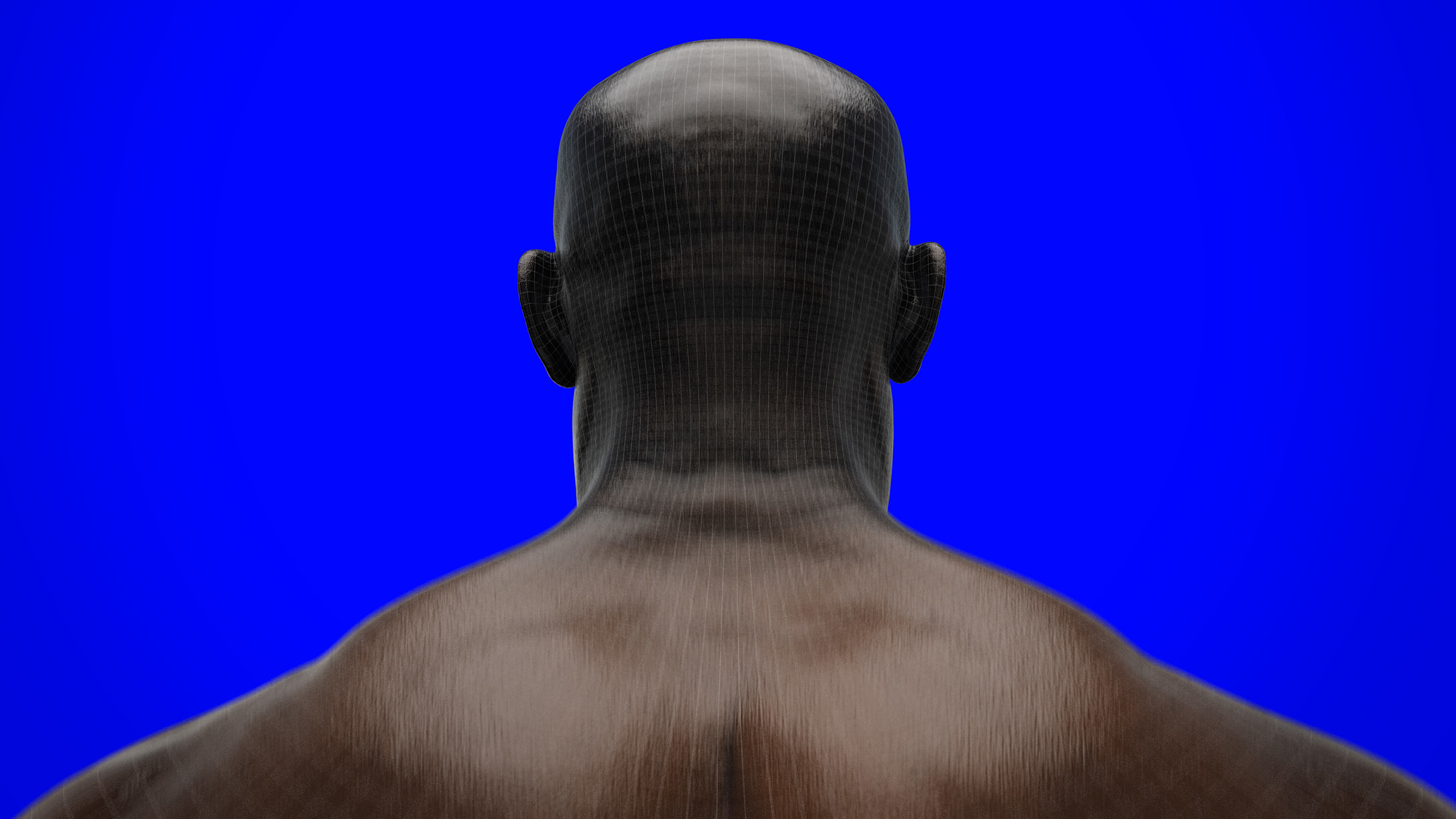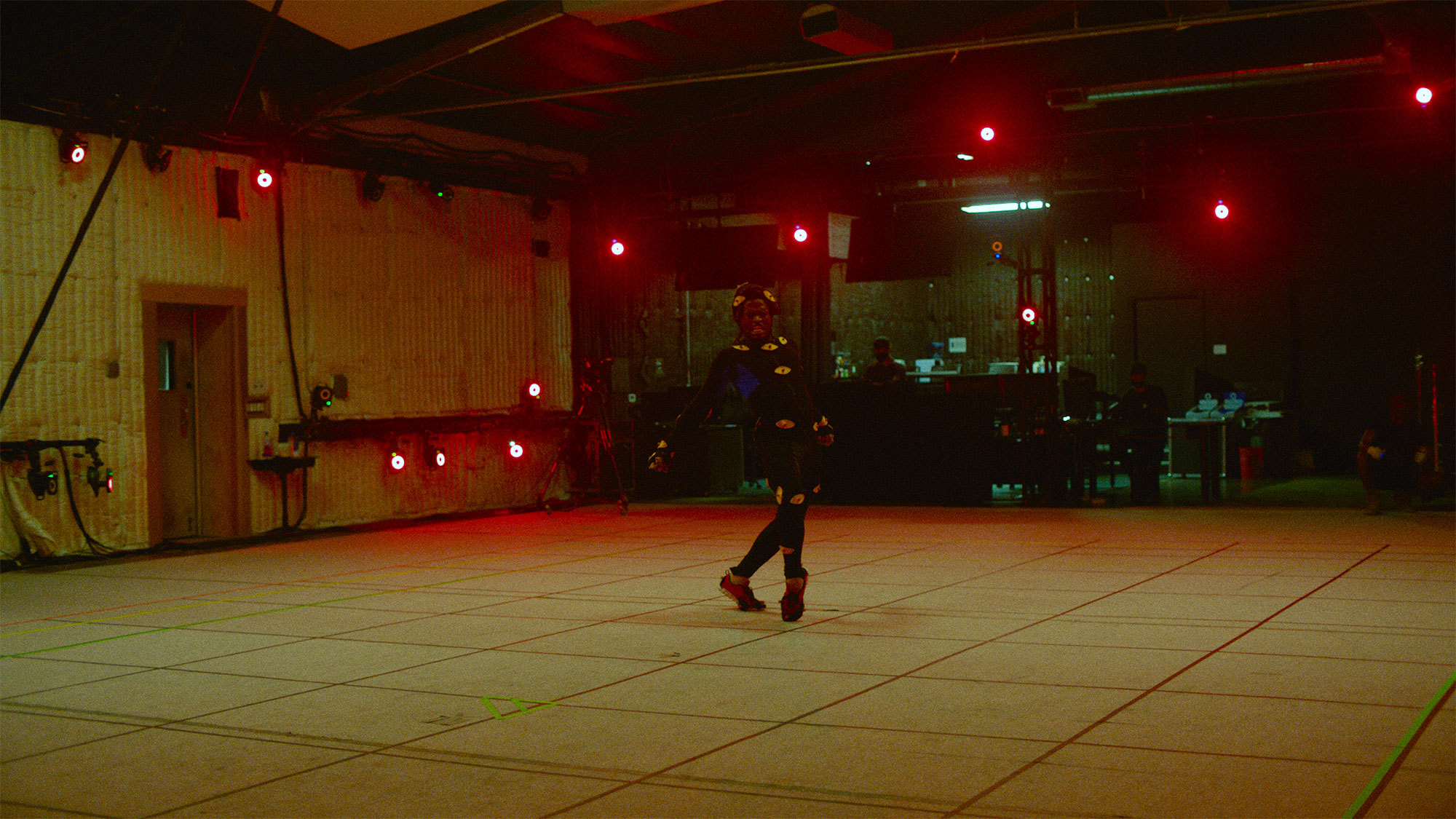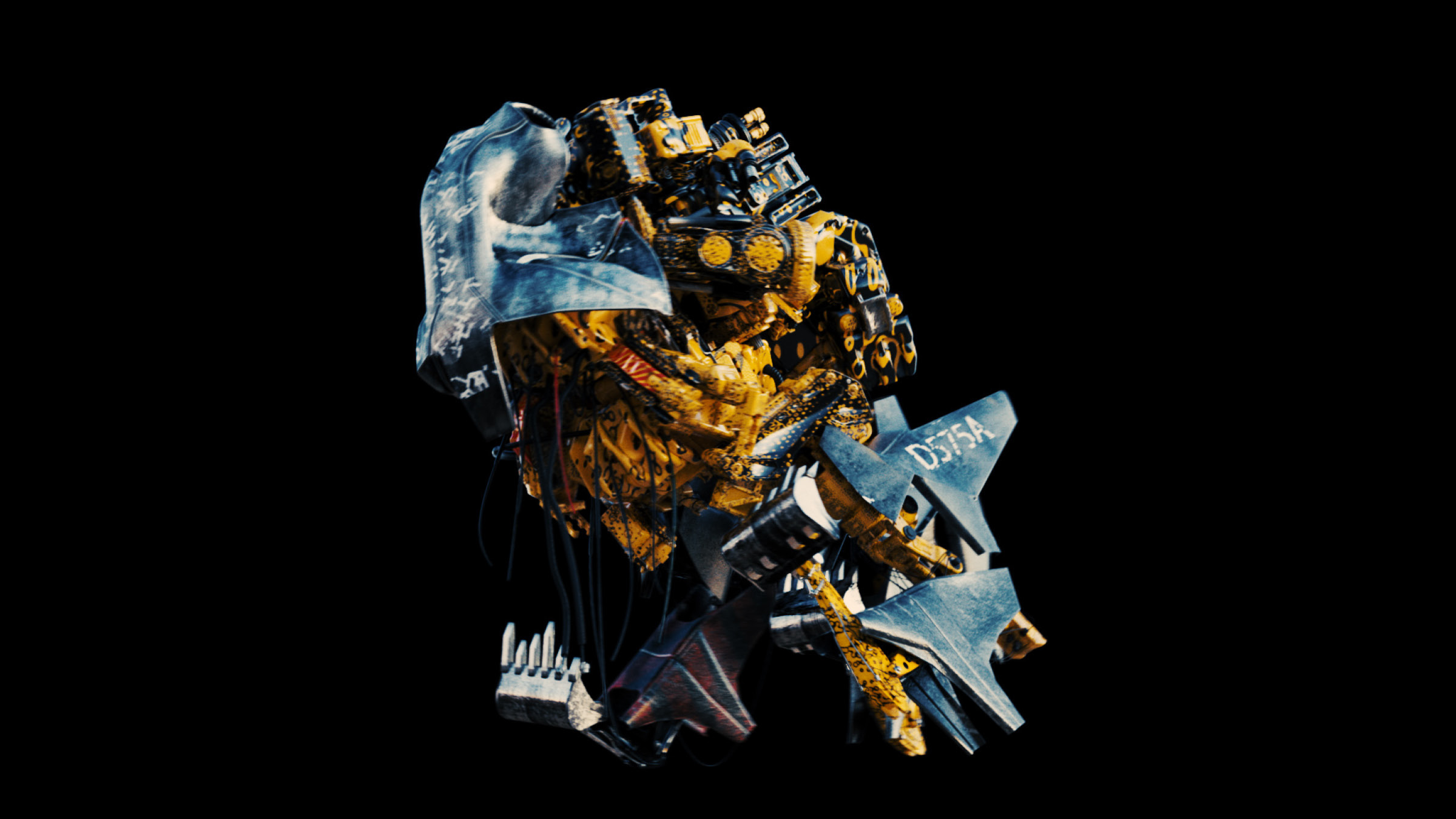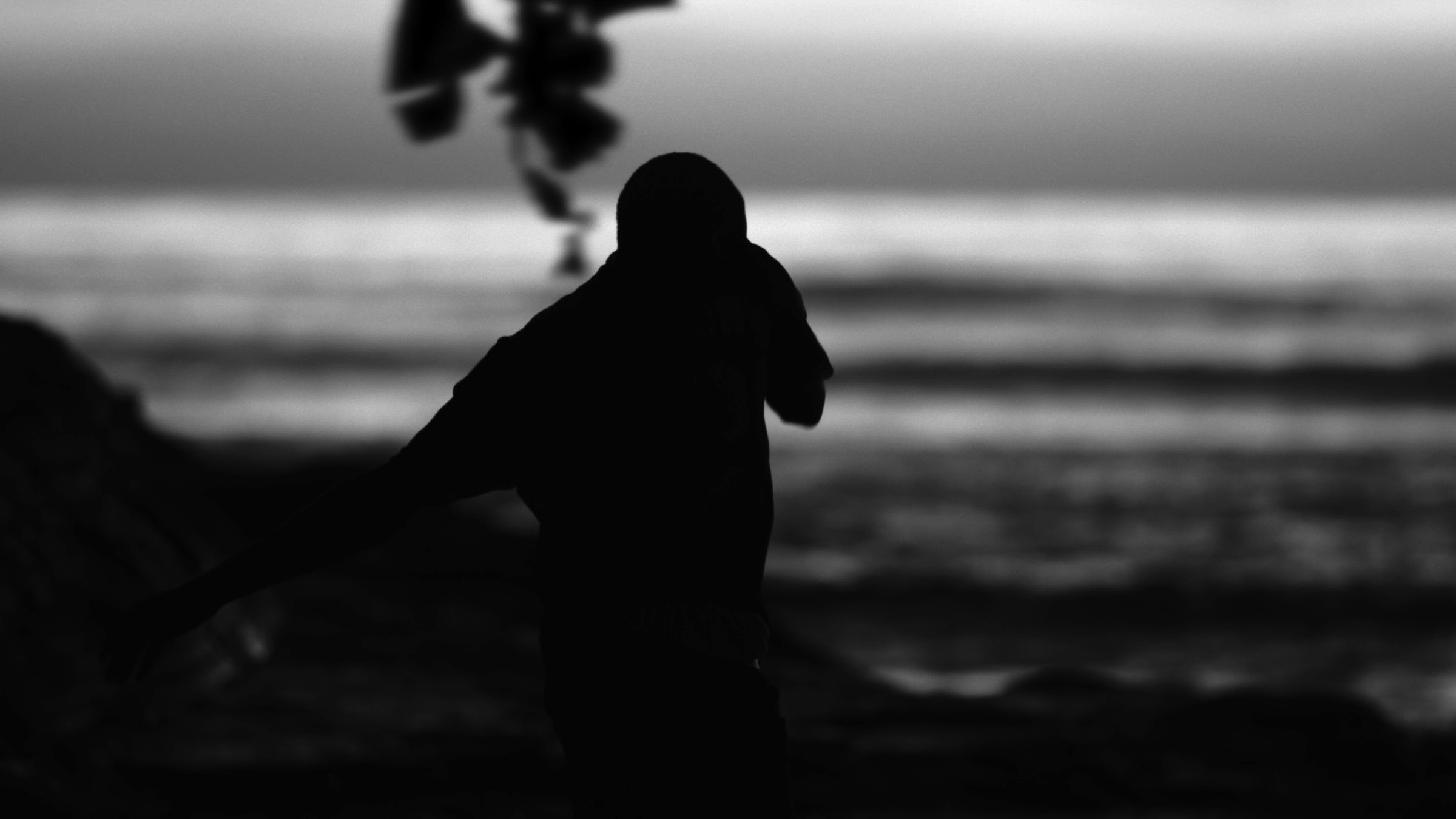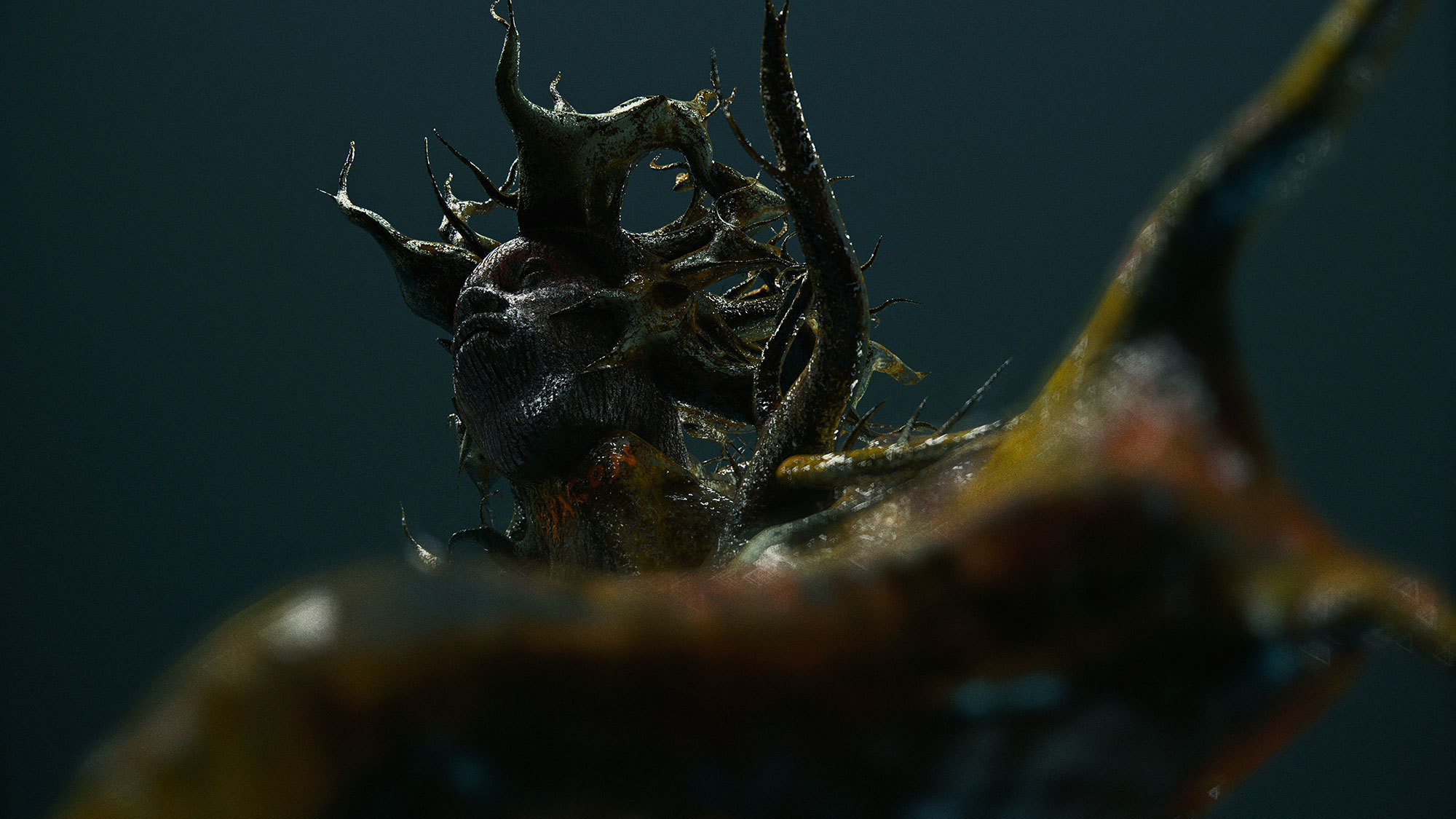New Faculty Kordae Henry on Language, Lineage, and the Transmedia Imaginary
Kordae Jatafa Henry (Fiction and Entertainment ’18) is a Los Angeles-based filmmaker and visual artist. The core of his practice stems from a multidisciplinary background, having earned a dual Master of Architecture/Landscape Architecture from University of Pennsylvania School of Design in 2015, as well as a Master of Arts in SCI-Arc’s postgraduate Fiction and Entertainment program in 2018. His release of his 2019 music film Earth Mother, Sky Father has led him to take the stage at the 2019 Design Indaba Conference, becoming a recent nominee for the Shots Awards’ 2020 New Director of the Year, and exhibiting his work in museums and festivals in many parts of the globe.
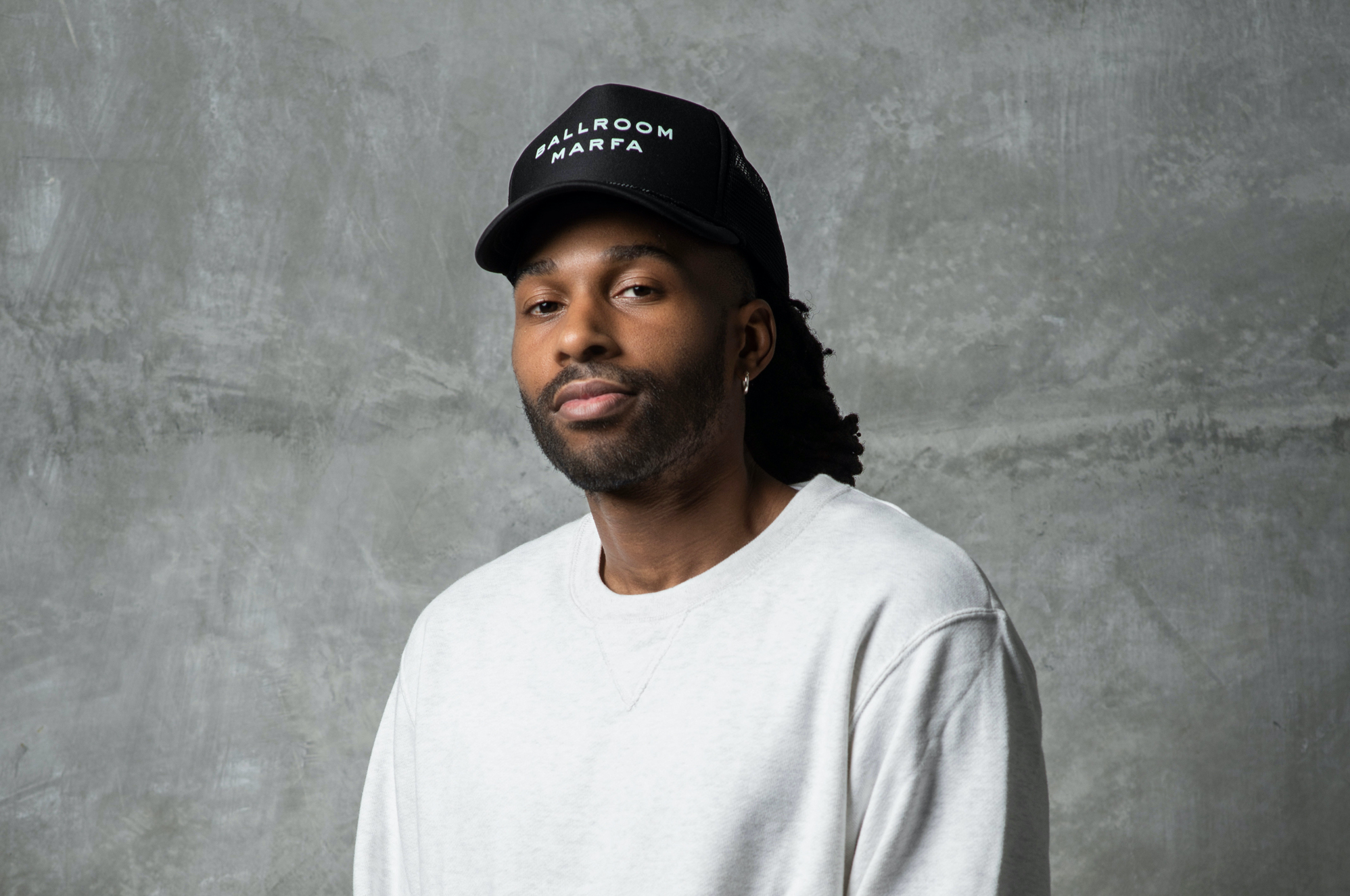
Through live-action music films, installations, dance, game engine environments, and mythology, Henry’s work invites new ways of seeing humans, folklore, mysticism, pop culture, post-genre music, labor, and creation stories as tools to explore the radical imagination. Most recently, Henry worked with the Sundance New Frontier Lab and ONX Studio to reconstruct a real-time performance exploring the past, present, and future of the Black body through ceremony. He is currently Design Studio and Visual Studies faculty at SCI-Arc.
We spoke to Henry to learn more about his past and current work, conceptual trajectory, and the ways in which making films can be a form of archeology.
Hi Kordae, thank you for speaking with us. To start: how does your process of making and conceptualizing architecture relate to your process of making film and what you make currently, and how has your background informed those things?
I think a lot of it quite simply has to do with proximity—the things that you’re closest to and that you surround yourself with—those tend to affect you the most. I remember times with my family specifically because the British and Jamaican traditions that were in my household were in conversation with many forms of Black culture outside my yard—referencing the way Black folks tell jokes and the way they tell stories and the way they express themselves through body language was always important to me and the architecture I strived for.
It is really about being embedded into the things that you have experienced firsthand and acknowledging those experiences as valuable for your creative process. I worked as an architectural designer, and through that process there's a lot of conceptualizing. As a student I was always making things outside of making buildings and landscapes. If you go back to my time in grad school, throughout every studio I was also trying to make things that engaged with time. It was a very deliberate choice for me to speak through design and film, which was my way of creating a home for myself where I could engage with a multiplicity of ideas without losing the intentions and emotional intellect in the work.
All of those things are both very clear and also very subtly woven into the stories that you're telling visually—for example the element of movement and how bodies are related to materials. What are some of your influences in terms of movement and musicality?
If we look at Jamaica’s art movements, I have to bring up this dancer named George Adams who started a movement form called Bruk Up in the early 90s. He then migrated to New York and spearheaded other dance forms using stop animation, freestyle, flex, and all types of mutations of that—which you likely would have witnessed on the streets of New York or that you see [dance and movement collaborator] Storyboard P doing in Earth Mother, Sky Father. The process for me is like an archeologist mining for cultural artifacts of the past and then assembling those parts to make a new image. I think that's what the work is doing, for me at least. It's pulling from the past, pulling from references, ideas, and archives to then further attempt to understand its value in our current place and time through a new reading.
In addition to Arthur Jafa you've mentioned Sun Ra, Kerry James Marshall, Nick Cave, and Octavia Butler as influences of yours, which makes total sense because so much of their work is about the imaginary and speculative worlds and science fiction and Afrofuturism. How do you see your work both within the realm of those artists and influences and then as a departure from them?
That's a great question. Saidiya Hartman has better words than I can ever use to describe the lineage and lexicon of Black wealth in all works of art and life. The way she describes her work is about allowing folks to enter worlds that already exist—that's how she starts her books and her writing. I follow that same sentiment. I feel like I'm following an already existing lineage of stardust and I'm just harnessing that stardust—the output might look different but it's still coming from the same sentiment of Black liberation, of blurring the lines between the digital and the physical, through music and sound and movement. All the things that I think embody some form of worldbuilding are probably stemming from an active engagement of reimagining as a part of my everyday life, and which I think is also a part of a lot of other Black folks’ lives: the reimagining of circumstances as an approach to survival. It's a necessary superpower to have.
In your work, you explore symbolic, ritualistic, historical, object-oriented ideas of healing, but at the same time talking about the materials and labor employed to make the technology you use as the formal element that sets your work apart. How do you see these pieces as related and what attracted you to incorporate certain tools and technologies not only in your storytelling but also in your process as an artist?
The Black body was one of the first technologies in America. It became a technology when it was transported, through the transatlantic slave trade. It became an object, and then later on became seen as human towards the emancipation era. I'm invested in using this language because of where I come from, and in doing so I’m attempting to flip this history on its head—where Black bodies were once deemed as less human are now seen as even more human. They can sense more, they can feel more, they can operate machines through movement as a form of intelligence. Things that we had once seen as not a form of value now have radical importance. That's why the body is so heavy in my work; the body and the mythology and the reinventing.
For the music specifically, what was your process like working back and forth together with [musical artists] Shabazz Palaces on what the soundtrack would be?
At first, I didn't have the film that we see today. I made a precursor film that wasn't finished at all. I sent what I had to [Shabazz Palaces] through Instagram and said, "I have this idea. It's not fully fleshed out, but here's a sample of what I'm trying to make." And Ish [member of Shabazz Palaces] watched what I had at the time and got back to me the next day. I went through his whole catalog of music that felt right to me and that embodied some of the ideas I was wrestling with. The album Lese Majesty hit differently and I knew something on that album would make it into the film. All in all, I’m grateful to work with Ish and have this exchange of sounds and ideas.
In your experience of being in the SCI-Arc Fiction and Entertainment program—in terms of having a vision already but being exposed to tools that really you haven't been exposed to before—did it allow you to fully articulate in different ways the things that you were already interested in? Were you already interested in these technologies and these tools, or were they something that you were newly exposed to while in the program?
Definitely tools, but also language. If you're coming from architecture, for example, you may not understand what a dolly shot is or what a script or storyboard looks like. You’re learning what the job of a director or producer or an executive holds within a production. But I would like to add that if you’re coming from outside of the industry, we have to recognize that what we offer—the story we tell and the tools we have—are just different. If anything, it just gives us more ways to communicate ideas.
When I first came into the program, I didn't know I wanted to be a director or a filmmaker. I’m still wrestling with that term but I knew I was interested in making things. It became clear throughout the program that my strengths were tied with not only visualizing the world but seeing it through.
I had some of the mechanics for animation because I come from a decade of architecture and design, but not all of the foundation in terms of filmmaking or writing. I think more importantly, these small things—if you're already in the film world—you take them for granted, but if you're not, you have to work from your strengths and learn the other parts of making films outside of the industry as you grow.
How did the Sundance New Frontier Lab come to be for you, and what has that experience been like so far?
We just completed the Sundance New Frontier Lab this August, so we're now officially fellows. It was a really solid opportunity and it took about three months of workshopping with other teams to investigate how we could work over Zoom. It's mainly a writing lab, so we had a range of advisors come in from all over, from Black artists who write comic books to producers at immersive media companies. So it was a spectrum of conversations related to the work on a very intimate level, and it really allowed for the opportunity to ask more questions about my work and my own practice. I believe that there wasn't a singular take away at the end, but the scope of the project grew, allowing us to see where it could potentially go in its current state.
The project, a film entitled Earthworks that I’m directing in the Lab, is an extension of Earth Mother, Sky Father set further into the future. I’m now exploring new mediums this time around using reality capture technology to record the body's movement. With a physical body now controlling digital characters, the rules for experimentation are now expanded. The project extends the real body into a digital world using virtual production methods seen on shows like Mandalorian.
Those organizing Sundance Lab seem like they do such a good job of finding interesting projects and artists and really like cultivating support for them. What have been your reflections since completing the Lab?
I'm still trying to culminate all my thoughts about it, but it was the first time they ever held the workshops online. Usually it takes place for about a week or so in the mountains, so this was a completely different thing, but I would like to think it worked out because it allowed for us to have some breathing room in between the work and advisors. That time in the Lab allowed me to see how important it was to have a healthy dialogue about the work and to trust my intuitions every step of the way.
We would meet once a week with a new advisor and that would give us enough time to think about everything that was said the previous week and to recognize what continued to resonate every session. Of course it would've been nice to be physically present with everybody in the same space, but somehow the three-month timing actually worked out well by giving us more space and time to work.
I never thought I would be in LA and I never thought that I would be in a Sundance Lab in LA. The only word that I can really describe the experience is ‘grateful’—I'm grateful to have been in that space and amongst fellow artists so dedicated to their craft.
Speaking of community, how did you and Earthworks collaborator Jeremy [Kamal] (MS Fiction and Entertainment '19) come together and how did that partnership congeal in the Sundance Lab?
Jeremy and I have known each other for a few years now, before Fiction and Entertainment. We met when he was a graduate student at the [Harvard] GSD and we found out we had several mutual friends. People would tell me: "Yo, you should meet Jeremy. You guys have a lot in common."
But then when I met him, it all made sense. Jeremy and I are from the same city, we have very similar backgrounds in architecture and landscape architecture, and we also did Fiction and Entertainment a year apart from one another. When I was joining the Lab, I thought I should really reach out and see if Jeremy was interested in coming on board as a creative director.
After seeing his final project from Fiction and Entertainment, we started to talk about the Black body and its relationship to landscape and technology. When I watched his animation, I thought we should definitely figure out if Earthworks would be a project that he would like to come in on. We have been worldbuilding for the project for about a year now, striving for a release date some time late next year.
What are your current and next projects?
Well, I’m currently in the New Museum and Onassis USA’s year-long ONX Studio fellowship. I've also been working on several music films using game engines. The next work releasing in January is exploring fantasy in ways that I haven't before. It's a new music short for Virgil [Abloh], opening up a world for Black fantasy and sound to reside.
Finally, I'm back at SCI-Arc, but as an instructor this time. I always like to say that teaching has never really been on my radar, but it’s always been a really profound thing to me. The role makes me think about holding up a legacy; a legacy of great teachers and artists before me. I'm here now and invested in seeing what forms of momentum we can galvanize around Black experimentation and radical design thinking, at this level and with this institution.
